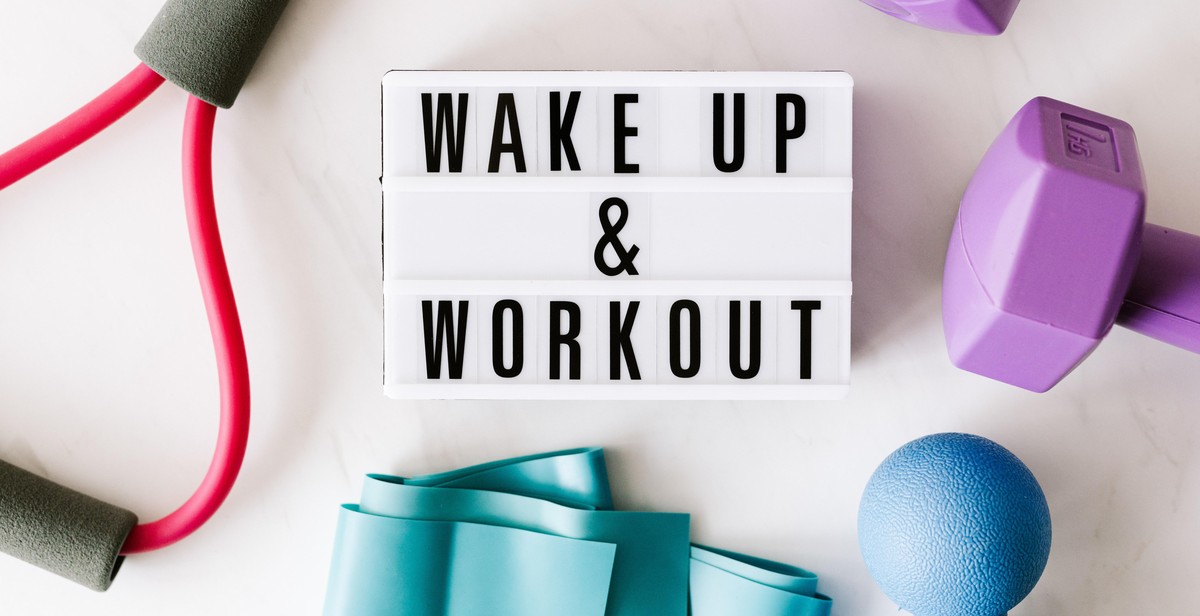How to Create a Personalized Workout Routine for Strength Training
Strength training is an essential part of any fitness routine, whether you’re a beginner or a seasoned athlete. However, creating a personalized workout routine can be challenging, especially if you’re not sure where to start. In this article, we’ll provide you with a step-by-step guide on how to create a personalized workout routine for strength training that suits your fitness level, goals, and schedule.
Benefits of Strength Training
Strength training offers numerous benefits, including:
- Increased muscle mass and strength
- Improved bone density
- Enhanced flexibility and range of motion
- Better posture and balance
- Increased metabolism and weight loss
- Reduced risk of injury and chronic diseases
Whether you’re looking to build muscle, lose weight, or improve your overall health, strength training can help you achieve your goals.
How to Create a Personalized Workout Routine
Creating a personalized workout routine for strength training involves the following steps:
- Determine your fitness level and goals
- Select the right exercises and equipment
- Design your workout program
- Track your progress and adjust your routine
By following these steps, you can create a personalized workout routine that targets your specific needs and helps you achieve your fitness goals.

Step 1: Determine your Fitness Goals
Before you start creating your personalized workout routine for strength training, it is crucial to determine your fitness goals. Setting clear goals will help you stay motivated and focused throughout your fitness journey. It will also help you tailor your workout routine to meet your specific needs and preferences.
Why is it important to determine your fitness goals?
Determining your fitness goals is important because it helps you:
- Stay motivated – When you have specific goals in mind, you are more likely to stay motivated and committed to your workout routine.
- Measure progress – Goals help you track your progress and celebrate your achievements along the way.
- Stay focused – With clear goals, you can stay focused on what you want to achieve and avoid distractions.
- Customize your workout – Goals help you tailor your workout routine to meet your specific needs and preferences.
Examples of fitness goals
Your fitness goals should be specific, measurable, attainable, relevant, and time-bound (SMART). Here are some examples of fitness goals:
| Goal | Description |
|---|---|
| Run a 5K | Complete a 5K run within a specific time frame. |
| Lose weight | Reduce body weight by a specific amount within a specific time frame. |
| Increase strength | Lift a specific amount of weight for a specific number of repetitions within a specific time frame. |
| Improve flexibility | Improve flexibility by achieving specific yoga poses or stretches. |
Once you have determined your fitness goals, you can move on to the next step of creating your personalized workout routine for strength training.

Step 2: Assess Your Current Fitness Level
Before starting any strength training routine, it’s important to assess your current fitness level. This will help you determine your starting point and set realistic goals for yourself. Additionally, assessing your fitness level can help you identify any areas of weakness or imbalance that need to be addressed in your workout routine.
Why is it important to assess your current fitness level?
Assessing your fitness level is important for a number of reasons:
- It helps you set realistic goals: By knowing your current fitness level, you can set achievable goals that will help you progress over time.
- It helps you identify areas of weakness: Assessing your fitness level can help you identify areas of weakness or imbalance that need to be addressed in your workout routine.
- It helps you avoid injury: Starting a workout routine that is too advanced for your current fitness level can increase your risk of injury. By assessing your fitness level, you can ensure that you are starting at a level that is appropriate for you.
How to assess your current fitness level
There are a number of ways to assess your current fitness level:
- Body composition: This involves measuring your body fat percentage and/or taking measurements of your waist, hips, and other areas of your body.
- Strength tests: These tests measure your strength in various areas, such as your upper body, lower body, and core.
- Cardiovascular tests: These tests measure your cardiovascular fitness, such as your ability to run or cycle for a certain amount of time.
- Flexibility tests: These tests measure your flexibility and range of motion in various areas of your body.
By assessing your current fitness level using these methods, you can determine your starting point and set realistic goals for yourself in your strength training routine.

Step 3: Choose your exercises
Choosing the right exercises for your workout routine is crucial to achieving your fitness goals. There are two main types of exercises: compound exercises and isolation exercises.
Compound exercises
Compound exercises involve multiple muscle groups and joints, making them an excellent choice for building overall strength and muscle mass. Some popular compound exercises include:
- Squats
- Deadlifts
- Bench press
- Pull-ups
- Rows
If your goal is to build overall strength and muscle mass, incorporating compound exercises into your routine is essential.
Isolation exercises
Isolation exercises target specific muscle groups, making them a great choice for targeting individual muscles and improving muscle definition. Some popular isolation exercises include:
- Bicep curls
- Tricep extensions
- Lateral raises
- Leg curls
- Calf raises
If your goal is to improve muscle definition or target specific muscle groups, incorporating isolation exercises into your routine can be beneficial.
Choosing exercises based on your fitness goals
When choosing exercises for your workout routine, it’s important to consider your fitness goals. If your goal is to build overall strength and muscle mass, focus on compound exercises. If your goal is to improve muscle definition or target specific muscle groups, incorporate isolation exercises into your routine.
| Fitness Goal | Exercise Type |
|---|---|
| Build overall strength and muscle mass | Compound exercises |
| Improve muscle definition or target specific muscle groups | Isolation exercises |
Remember to also vary your exercises to keep your routine challenging and prevent boredom. Consult with a personal trainer or fitness professional if you need help selecting exercises or creating a personalized workout routine.

Step 4: Determine your training frequency and volume
Training frequency and volume are essential factors to consider when creating a personalized workout routine for strength training. Training frequency refers to how often you work out, while training volume refers to the total amount of work you do in each session.
What is training frequency and volume?
Training frequency and volume are crucial components that can determine your progress in achieving your fitness goals. If you exercise too little, you won’t make significant progress, while exercising too much can lead to burnout and injuries. Therefore, it is essential to find the right balance between frequency and volume.
How to determine your training frequency and volume
There is no one-size-fits-all approach to determining your training frequency and volume. It varies depending on your fitness level, goals, schedule, and recovery time. As a general rule, beginners should exercise two to three times a week, while advanced lifters can train four to six times a week.
Your training volume should also increase as you progress in your fitness journey. You can increase your volume by increasing the number of sets, reps, or weight lifted. However, it is crucial to listen to your body and avoid overtraining, which can lead to injuries or burnout.
It is also essential to incorporate rest days into your workout routine. Rest days allow your muscles to recover and grow, preventing injury and burnout. As a general rule, you should have at least one rest day per week.
| Training Level | Training Frequency |
|---|---|
| Beginner | 2-3 times per week |
| Intermediate | 3-4 times per week |
| Advanced | 4-6 times per week |
By determining your training frequency and volume, you can create a personalized workout routine that fits your fitness goals, schedule, and recovery time. Remember to listen to your body, avoid overtraining, and incorporate rest days into your workout routine.

Step 5: Create your personalized workout routine
Now that you have determined your fitness goals, assessed your current fitness level, created a balanced exercise plan and selected the right exercises, it’s time to design your personalized workout routine for strength training.
Sample workout routine for strength training
Below is a sample workout routine that you can use as a guide to create your personalized strength training routine:
| Exercise | Sets | Reps | Rest |
|---|---|---|---|
| Squats | 3 | 10 | 60 seconds |
| Bench press | 3 | 10 | 60 seconds |
| Deadlifts | 3 | 10 | 60 seconds |
| Shoulder press | 3 | 10 | 60 seconds |
| Bent-over rows | 3 | 10 | 60 seconds |
This routine focuses on compound exercises that work multiple muscle groups at once. It is important to note that this routine is just an example and should be adjusted to fit your specific goals and needs.
When creating your personalized routine, consider the following:
- Include exercises that target all major muscle groups
- Include exercises that address your specific fitness goals
- Gradually increase the weight and intensity of your workouts
- Give your muscles time to recover between workouts
Remember that creating a personalized workout routine takes time and experimentation. Be patient, stay consistent, and listen to your body’s needs.

Step 6: Monitor and Adjust Your Routine
Creating a workout routine is just the first step towards achieving your fitness goals. To ensure that you continue to make progress and avoid hitting a plateau, it’s important to monitor and adjust your routine regularly.
Why Is It Important to Monitor and Adjust Your Workout Routine?
Over time, your body adapts to the stress of your workout routine, and you may find that you no longer see the same results as you did when you first started. This is called a plateau, and it can be frustrating and demotivating. By monitoring and adjusting your routine, you can keep your body challenged and avoid hitting a plateau.
How to Monitor and Adjust Your Workout Routine
There are several ways to monitor your workout routine:
- Track your progress: Keep a record of your workouts, including the exercises, sets, reps, and weights used. This will help you see how you’re progressing over time.
- Listen to your body: Pay attention to how your body feels during and after your workouts. If you feel excessively tired, sore, or achy, you may need to adjust your routine.
- Get feedback: Consider working with a personal trainer or fitness professional who can provide feedback on your form, technique, and workout plan.
When it comes to adjusting your routine, there are several things you can do:
- Change the exercises: Swap out exercises that you’ve been doing for a while with new ones to keep your body challenged.
- Adjust the sets and reps: Increase or decrease the number of sets and reps you’re doing to keep your body guessing.
- Increase the weight: Gradually increase the weight you’re lifting to continue building strength.
Remember, consistency is key when it comes to achieving your fitness goals. By monitoring and adjusting your workout routine, you can ensure that you continue to make progress and stay motivated along the way.

Conclusion
Creating a personalized workout routine for strength training can be a daunting task, but it is essential for achieving your fitness goals. With the right guidance, you can design a workout plan that is tailored to your needs and preferences.
Remember to start with an assessment of your fitness level and goals, and then identify the exercises that will help you achieve them. Don’t forget to include both compound and isolation exercises, and incorporate progressive overload to continually challenge your muscles.
It’s also important to pay attention to your nutrition and rest. Make sure you are fueling your body with the right nutrients, and allow for adequate recovery time between workouts.
Lastly, be consistent and patient. Results won’t happen overnight, but with dedication and hard work, you will see progress and reach your strength training goals.
Key Takeaways
- Assess your fitness level and identify your goals
- Incorporate compound and isolation exercises
- Use progressive overload to challenge your muscles
- Pay attention to nutrition and rest
- Be consistent and patient
Recommended Resources
If you’re looking for more guidance on creating a personalized workout routine for strength training, here are some resources to check out:
- The Ultimate Beginner’s Guide to Building Muscle
- Complete M&F Beginner’s Training Guide Plan
- 4 Tips for Creating a Personal Training Program
| Author: | Jane Doe |
| Date: | May 1, 2021 |
| Category: | Fitness |
